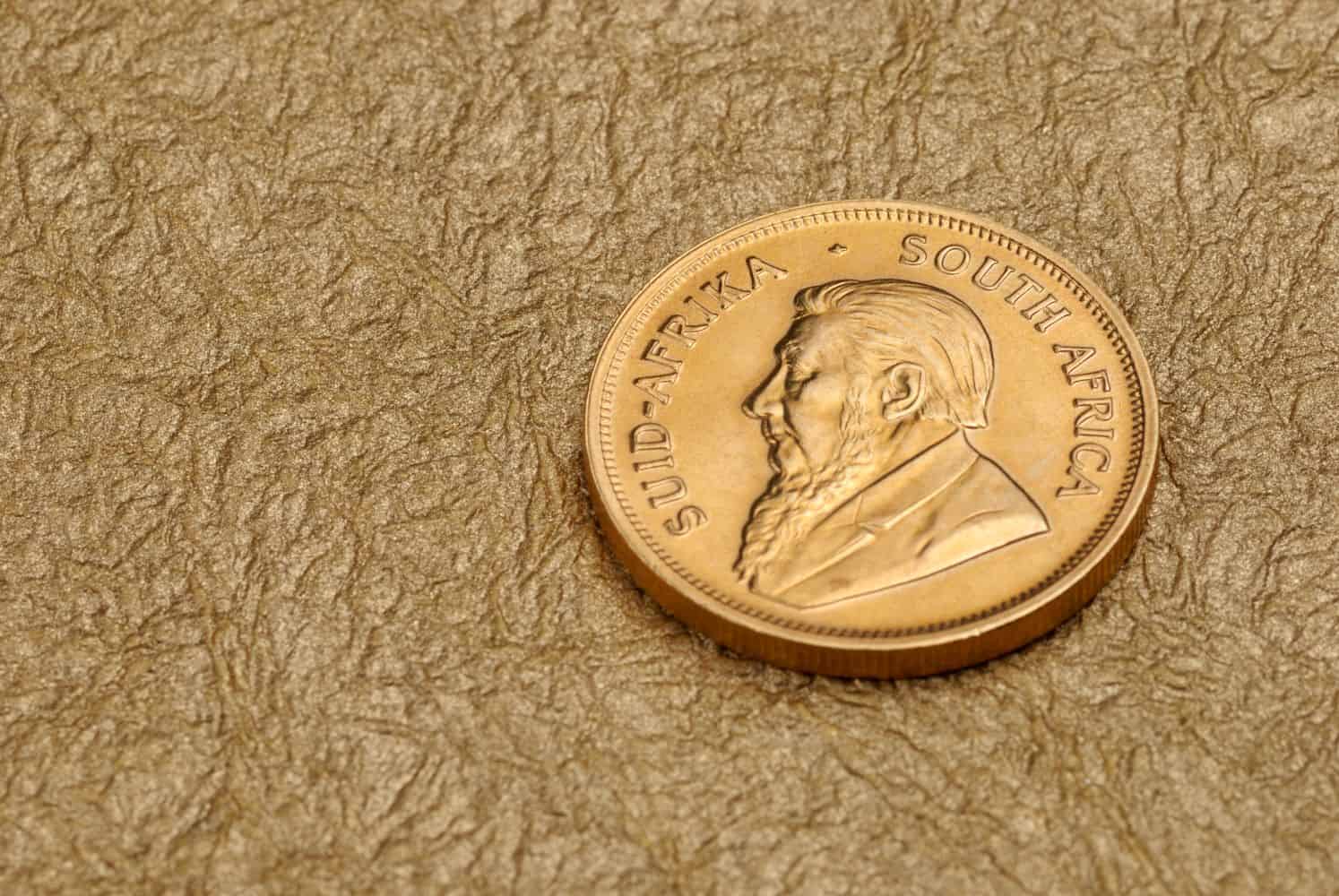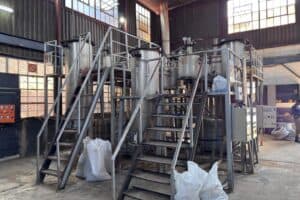It makes sense to lock a few coins away for an emergency, but what about using gold to lock away household money too?

The surge in the gold price to above $3 650 an ounce has once again put the spotlight on gold and, for South Africans, also on the Krugerrand. Anyone who bought a Krugerrand at the start of 2022, when the price hovered around R29 000, would be pleased with today’s price of almost R70 000.
It would serve as a reminder of the value of gold coins as a long-term investment.
Not only have Krugerrands established themselves as a long-term store of value, but they’re also as a practical option for short-term savings. Some pensioners are even using them in place of a bank account to lock away next year’s groceries.
A Moneyweb reader shared a story of a retired relative who parked R350 000 in gold coins last year, explaining that he would sell one or two if he needed extra money. Maybe he needed an unexpected eye operation, or wanted some extra spending money to go on holiday.
He recently bought more coins – with grocery money – stating that he plans to sell a coin every few months to cover living expenses. The logic is simple: avoid leaving money in a bank account where interest often fails to beat inflation.
“Holding my money in gold coins serves as a hedge against inflation and all the uncertainty in the world, as well as the regular chaos in SA that hits the rand,” he says. “Krugerrands can be easily liquidated when needed.”
ALSO READ: Don’t sell your Krugerrands yet
Sense
Dane Viljoen, co-founder and chief revenue officer of Troygold, says this strategy can make sense. “Gold has historically provided real returns of about 3.9% per year in rand terms, compared with just 0.8% from traditional bank savings or deposits.
“By holding Krugerrands, an investor can remain ‘long gold’ while still having access to liquidity by either selling coins or, increasingly, by borrowing against them.
“Many platforms (including Troygold) allow investors to use their gold as collateral for credit. At rates starting at prime +3% (currently around 13.5%), holders can unlock up to 50% of the the vale of their coins.
“The advantage is that they keep ownership of the underlying asset while accessing cash when needed,” says Viljoen, adding that this principle allows people to use gold in their day-to-day finances.
It works well as long the gold price rises, and very well if the gold price increases sharply. Our pensioner has around 40% more in household money now than what he had at the start of the year.
“Of course, no investment is risk-free,” says Viljoen. “The key danger is if the gold price falls.
“Borrowers could then find themselves paying interest on an asset that has temporarily lost value. In that case, selling a portion of the coins may be a better choice than taking on debt.”
He warns that there is also the issue of cost. “Professional credit facilities price loans at reasonable rates, but pawn-style operators often charge far higher interest, which can quickly erode the benefits of the strategy if the owner does not use reputable financiers.”
ALSO READ: Strong rand not reflection of SA’s economic health
Rand hedge
For many South Africans, the greatest appeal of Krugerrands is their protection against a weakening rand. Gold acts as a reserve asset, preserving purchasing power during bouts of currency weakness or political instability.
By holding these coins, savers insure themselves against risks that can erode the value of cash holdings.
“Those who adopted this approach a few years ago have little to regret. Between August 2020 and mid-2025, the gold price in rand terms climbed from about R33 000 an ounce to around R59 000 – a gain of 80%, or roughly 12% a year compounded.
“By contrast, local bank deposits over the same period offered between 6% and 10% per annum,” according to Viljoen.
He adds that demand for Krugerrands and fractional gold investments has surged in this period, especially among savers wary of geopolitical instability and inflation. “We noted strong growth in our gold subscription product, with customers steadily buying R500 to R2 500 worth of gold every month.
“For many, a full Krugerrand priced above R60 000 is out of reach, making fractional purchases an accessible alternative. The platform also allows fractional sales, when an investor needs a bit of money in an emergency,” he says.
Viljoen says the system is particularly popular with farmers, business owners, and individuals who already own Krugerrands through part purchases or inheritance. They can upload their coins, secure a credit facility against them, and draw down as needed for business expenses or personal use.
Importantly, while investors can sell 100% of their gold holdings, the credit facility caps loans at 50% of the gold’s value. This conservative loan-to-value ratio ensures that assets remain sufficiently covered, limiting the risk of forced liquidation.
ALSO READ: Here’s why you need an emergency fund – and it’s not to buy new golf clubs
Out of the drawer
“South Africans have long treated Krugerrands as keepsakes. They are often locked away in safes or forgotten in drawers. But with new credit platforms, these coins can now become productive capital.
“Instead of lying idle, they can be activated to support household cash flow, business reinvestment, or emergency funding needs.
“The idea of using Krugerrands as an emergency fund is not just an old-fashioned fascination with gold. It is a form of financial engineering that allows savers to hedge against inflation, preserve purchasing power, and access liquidity when needed,” says Viljoen.
However, the approach is not without risks, particularly if the gold price softens. Short-term uncertainty persists.
Only this week, Alex Kuptsikevich, chief market analyst at FxPro and regular commentator on the gold price, cautioned that gold is vulnerable to “sell-the-fact” this week. “The expected cut in US interest rates on Wednesday risks triggering ‘buy the rumours, sell the fact’ after reaching a recent new record,” he says.
A fall of $200 in the gold price might not look like much, but it translates to a decline of more than R3 500 in the “grocery money” stashed away in a Krugerrand.
ALSO READ: Gold and platinum shares steal the show as JSE cracks new high
Long term
Kuptsikevich remains optimistic over the longer term. “Gold reacts strongly to geopolitics and has reached another record high, rising for the fourth week in a row.
“Washington is ready to wage economic war on the Kremlin’s main allies, India and China, if Brussels supports it. As a result, there is an increased risk that central banks will step up their gold purchases as part of their reserve diversification and de-dollarisation processes.
“If US president Donald Trump manages to drive a wedge between Russia, India, and China, oil prices will rise and inflation will accelerate. A stagflationary environment and increased central bank purchases of bullion will help gold,” he says.
The Australian ANZ Group published a research report in which its analysts increased their forecasts for the gold price – to $4 000 per ounce by June 2026.
It says that the prospect of continued accommodative monetary policy in the US, increasing geopolitical tensions, ongoing macroeconomic challenges, and concerns over the Federal Reserve’s independence are expected to strengthen the investment case for gold.
“Rising risks to the labour market will likely prompt the US Fed to maintain its easing stance through to March 2026. This will exert downward pressure on US Treasury yields, which normally enhances the appeal of gold,” says ANZ.
This article was republished from Moneyweb. Read the original here.






